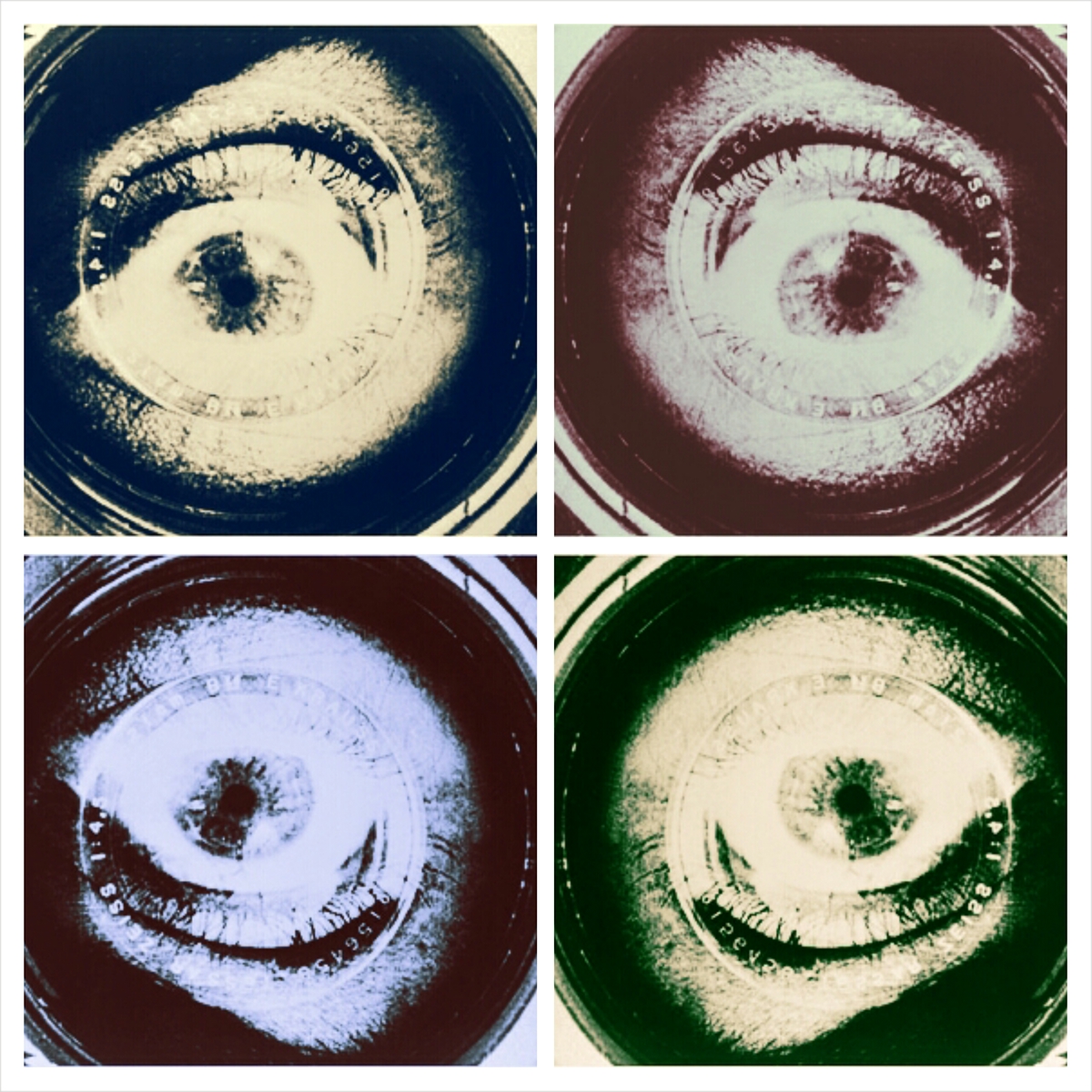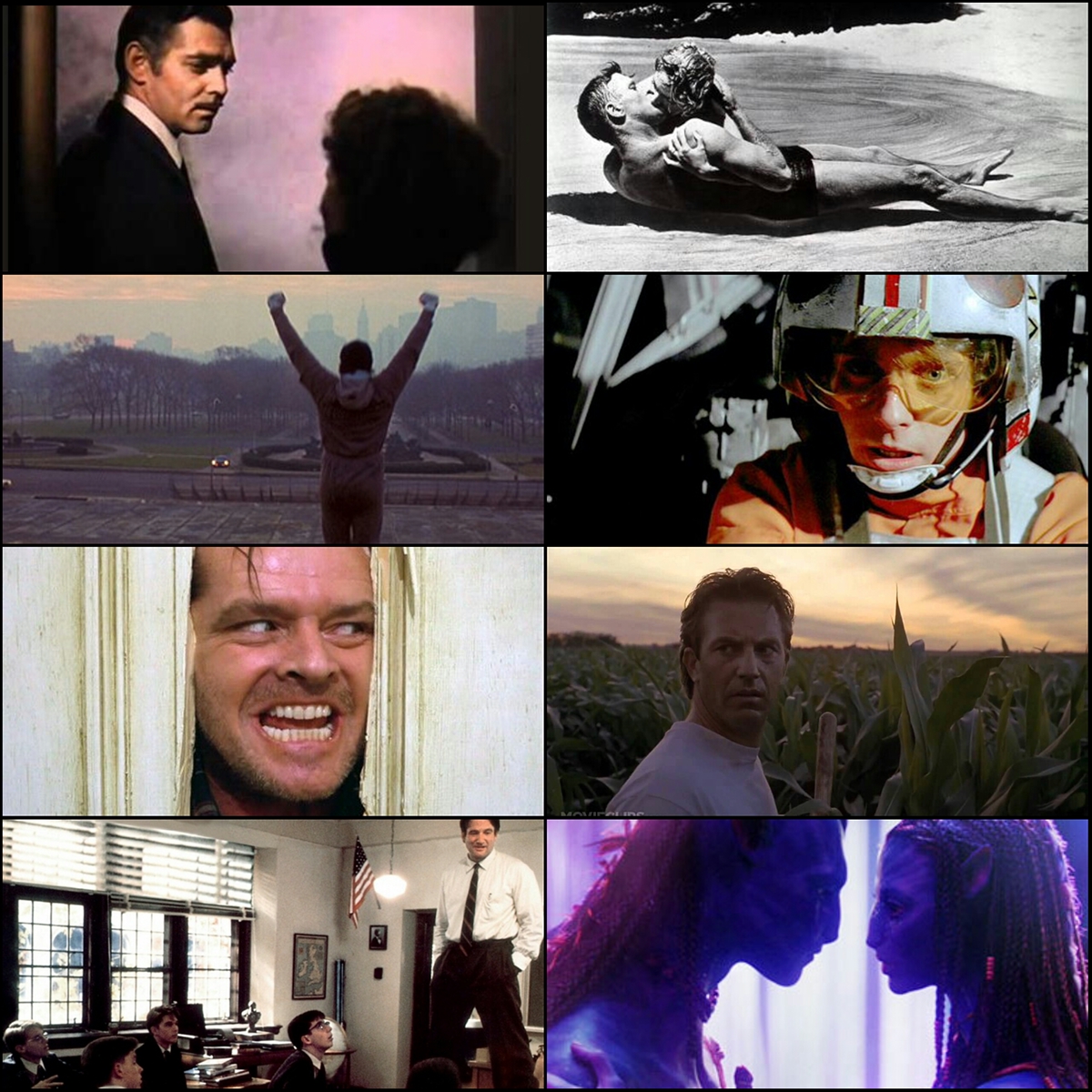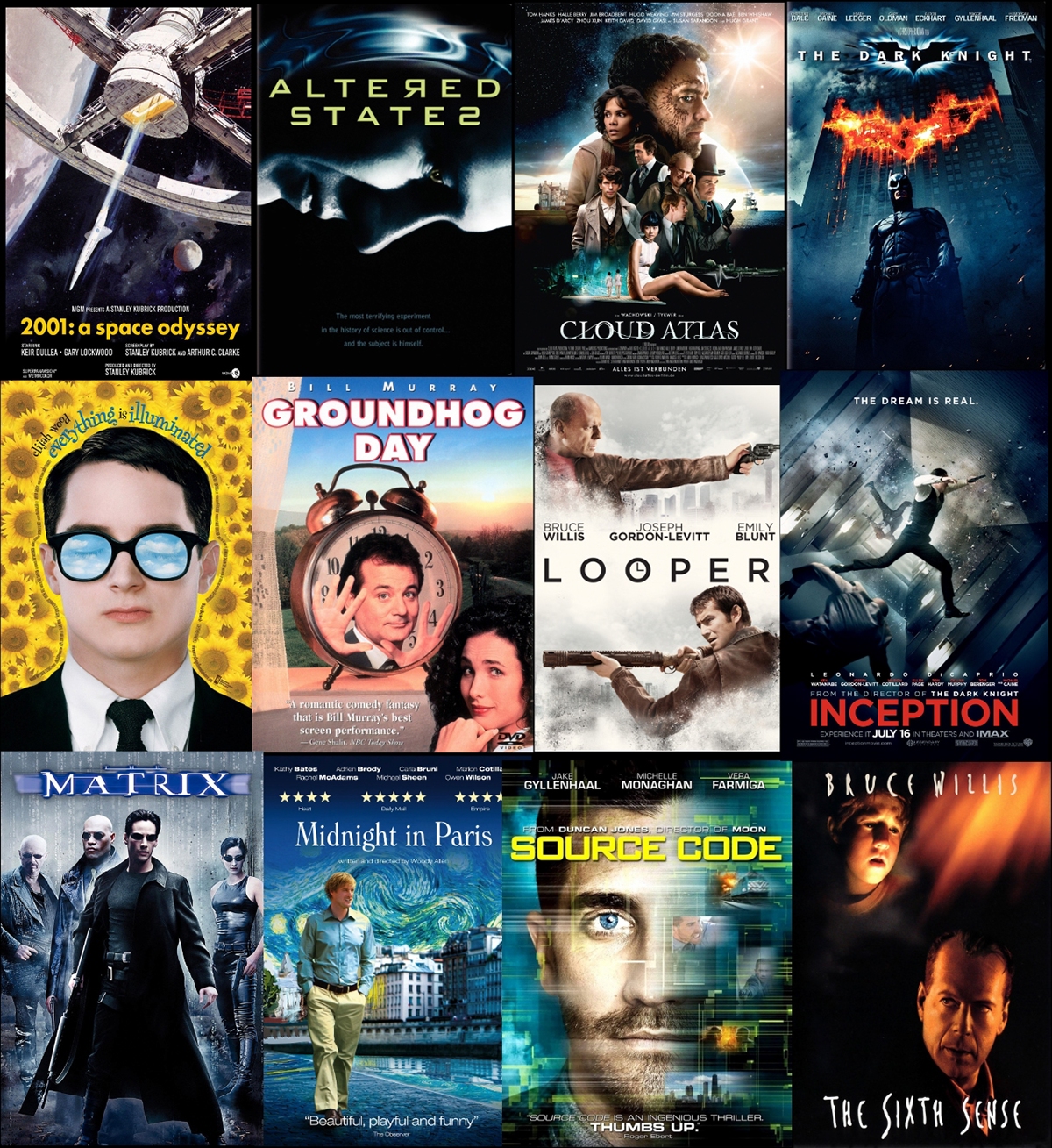
The Subjective-Objective Lens ( "Man With a Movie Camera") Cine-Shot Collage (MAK)
With this cine-shot collage I am playing with using this iconic image from the Russian silent film classic "Man with a Movie Camera" to visually illustrate the inside/subjective and outside/objective dimensions of Integral Theory's four quadrants that produce the eight zones of the Zonal Lens, or the inside and outside of the individual and collective interior and exterior dimension-perspectives.
For more on the Zonal Lens and its application to the cinematic arts see: https://www.integrallife.com/integral-post/integral-cinema-studio-zonal-lens
To view "Man with a Movie Camera" in its entirety on YouTube follow this link: http://youtu.be/z97Pa0ICpn8
With this cine-shot collage I am playing with using this iconic image from the Russian silent film classic "Man with a Movie Camera" to visually illustrate the inside/subjective and outside/objective dimensions of Integral Theory's four quadrants that produce the eight zones of the Zonal Lens, or the inside and outside of the individual and collective interior and exterior dimension-perspectives.
For more on the Zonal Lens and its application to the cinematic arts see: https://www.integrallife.com/integral-post/integral-cinema-studio-zonal-lens
To view "Man with a Movie Camera" in its entirety on YouTube follow this link: http://youtu.be/z97Pa0ICpn8

The Evolution of Cinematic Worldviews (“La Coquille et le Clergyman”) Cine-Collage (MAK)
This cine-collage is made up of various shots from the film “La Coquille et le Clergyman” (The Seashell and the Clergyman)(1928). With this cine-college I have tried to visually represent how this landmark silent film, perhaps the very first integrally-informed cinematic work in history, appears to show a cinematic evolution of personal and cultural worldviews that can be seen as directly correlating to the Integral model’s spectrum of major worldviews.
Note that the shots are arranged in chronological order from bottom-to-top and right-to-left, starting with the magical worldview imagery of the alchemist at work, to the mythic worldview imagery of the king and queen in their thrones, to the rational worldview imagery of the main character moving through the chessboard of life, to the pluralistic worldview imagery of the union of two souls and multiple perspectives, and finally the integral worldview imagery of the integration of all dimension-perspectives.
For more on cinematic worldviews and "La Coquille et le Clergyman" see "Toward an Integral Cinema" at: https://www.integrallife.com/integral-post/toward-integral-cinema.
This cine-collage is made up of various shots from the film “La Coquille et le Clergyman” (The Seashell and the Clergyman)(1928). With this cine-college I have tried to visually represent how this landmark silent film, perhaps the very first integrally-informed cinematic work in history, appears to show a cinematic evolution of personal and cultural worldviews that can be seen as directly correlating to the Integral model’s spectrum of major worldviews.
Note that the shots are arranged in chronological order from bottom-to-top and right-to-left, starting with the magical worldview imagery of the alchemist at work, to the mythic worldview imagery of the king and queen in their thrones, to the rational worldview imagery of the main character moving through the chessboard of life, to the pluralistic worldview imagery of the union of two souls and multiple perspectives, and finally the integral worldview imagery of the integration of all dimension-perspectives.
For more on cinematic worldviews and "La Coquille et le Clergyman" see "Toward an Integral Cinema" at: https://www.integrallife.com/integral-post/toward-integral-cinema.

Evolutionary Odyssey ("2001: A Space Odyssey") Cine-Collage (MAK)
This cine-collage is made up of various shots from the film "2001: A Space Odyssey" (1968). Through this cine-collage I have attempted to represent some of the visual aspects of Kubrick's masterful use of multiple gross, subtle, and causal cinematic energetic frequencies and the complex layering of cinematic referential density to create a powerful visceral experience of the evolution of structures of consciousness from Archaic to Transpersonal or Super-Integral structures.
For more on cinematic energies, referential density, and "2001" see "Integral Cinema Studio" at: https://www.academia.edu/3514048/Integral_Cinema_Studio_An_Online_Article_Series_on_Integral_Cinema_Theory_and_Practice
Note that the shots are arranged in chronological order from top-to-bottom and left-to-right, starting in the upper left corner.
This cine-collage is made up of various shots from the film "2001: A Space Odyssey" (1968). Through this cine-collage I have attempted to represent some of the visual aspects of Kubrick's masterful use of multiple gross, subtle, and causal cinematic energetic frequencies and the complex layering of cinematic referential density to create a powerful visceral experience of the evolution of structures of consciousness from Archaic to Transpersonal or Super-Integral structures.
For more on cinematic energies, referential density, and "2001" see "Integral Cinema Studio" at: https://www.academia.edu/3514048/Integral_Cinema_Studio_An_Online_Article_Series_on_Integral_Cinema_Theory_and_Practice
Note that the shots are arranged in chronological order from top-to-bottom and left-to-right, starting in the upper left corner.

Dinner with the Original Self ("Altered States") Cine-Scene Collage (MAK)
This cine-scene collage is made up of various shots from a dinner scene from the film "Altered States" (1980) that illustrates the multiple energetic frequencies that can be transmitted through a cinematic work through text, image, sound, and temporal structuring.
In this seemingly normal everyday dinner scene among a group of impassioned scientists and academics the Sensory-Kinetic, Vital-Kinetic, Emotional-Relational, Mental-Perspectival, and potentially Transcendental cinematic energy fields are swirling together toward a dramatic crescendo using various textual, visual, auditory, and temporal energetic frequency patterns, including camera movement, editorial pacing and rhythm, character physical energy, emotional-relational referential density resonance built up between the characters, character mental states and perspectival altitudes, and transcendental referential density resonance.
For more on these and other cinematic energies see "Integral Cinema Studio" at: https://www.academia.edu/3514048/Integral_Cinema_Studio_An_Online_Article_Series_on_Integral_Cinema_Theory_and_Practice
You can also watch the whole scene on YouTube at: http://youtu.be/aLYWDYxuKSY
This cine-scene collage is made up of various shots from a dinner scene from the film "Altered States" (1980) that illustrates the multiple energetic frequencies that can be transmitted through a cinematic work through text, image, sound, and temporal structuring.
In this seemingly normal everyday dinner scene among a group of impassioned scientists and academics the Sensory-Kinetic, Vital-Kinetic, Emotional-Relational, Mental-Perspectival, and potentially Transcendental cinematic energy fields are swirling together toward a dramatic crescendo using various textual, visual, auditory, and temporal energetic frequency patterns, including camera movement, editorial pacing and rhythm, character physical energy, emotional-relational referential density resonance built up between the characters, character mental states and perspectival altitudes, and transcendental referential density resonance.
For more on these and other cinematic energies see "Integral Cinema Studio" at: https://www.academia.edu/3514048/Integral_Cinema_Studio_An_Online_Article_Series_on_Integral_Cinema_Theory_and_Practice
You can also watch the whole scene on YouTube at: http://youtu.be/aLYWDYxuKSY
— with William Hurt and Blair Brown.

Holo-Matrix ("The Matrix" 1999) Cine-Sequence Collage. This cine-collage maps out the major holonic elements of the opening title sequence of "The Matrix" (1999), illustrating how each section is a whole that is part of a greater whole, which in turn is part of an even greater whole, and so on, until the transition into the first live shot of the film (looking directly into the beam of a flashlight).
By integrating and adapting the studio logos to resonate with the color patterns, rhythms, and illusionary reality effects, the filmmakers create an opening induction pre-hinting to us that what we are seeing is not the whole picture and that what is real is going to be called into question.

Iconic Cinematic Moments as Tetra-Evolutionary Archetypal Resonance Patterns Cine-Collage (MAK)
This cine-collage is made up of shots from various films that represent iconic cinematic moments. From an integral cinema perspective these iconic cinematic moments occur when all dimensions of cinematic expression (text, image, sound, and time) synchronize across all levels of the cinematic narrative (textual, subtextual, meta-textual/thematic, and trans-textual/archetypal) to produce a highly resonant archetypal pattern that can deeply resonate with individual viewers and penetrate the collective as memetic patterns and produce tetra-evolutionary effects. These archetypally resonant iconic moments are trans-archetypal in that they can transcend and include multiple archetypes and approach the proto-archetypal level.
The pictured examples of iconic cinematic moments include: The "Frankly I don't give a damn" moment from Gone With The Wind (1939); the lovers on the beach moment from From Here to Eternity (1953); the "Rocky-Steps" moment from Rocky (1976); the "Trust the Force" moment from Star Wars (1977); the "Here's Johnny" moment from The Shinning (1980); the "Build it and he will come" moment from Field of Dreams (1989); the "Carpe Diem, seize the day" moment from Dead Poets Society (1989); and the "I see you" moment from Avatar (2009). Note that these images are representative of a moment that is built up through referential density over time through many scenes in these cinematic works; the images here are only representative of these temporally constructed trans-archetypally resonant iconic moments.
For more on this see The Archetypal Lens presentation at: http://www.slideshare.net/markallankaplan/kaplan-the-archetypallens
This cine-collage is made up of shots from various films that represent iconic cinematic moments. From an integral cinema perspective these iconic cinematic moments occur when all dimensions of cinematic expression (text, image, sound, and time) synchronize across all levels of the cinematic narrative (textual, subtextual, meta-textual/thematic, and trans-textual/archetypal) to produce a highly resonant archetypal pattern that can deeply resonate with individual viewers and penetrate the collective as memetic patterns and produce tetra-evolutionary effects. These archetypally resonant iconic moments are trans-archetypal in that they can transcend and include multiple archetypes and approach the proto-archetypal level.
The pictured examples of iconic cinematic moments include: The "Frankly I don't give a damn" moment from Gone With The Wind (1939); the lovers on the beach moment from From Here to Eternity (1953); the "Rocky-Steps" moment from Rocky (1976); the "Trust the Force" moment from Star Wars (1977); the "Here's Johnny" moment from The Shinning (1980); the "Build it and he will come" moment from Field of Dreams (1989); the "Carpe Diem, seize the day" moment from Dead Poets Society (1989); and the "I see you" moment from Avatar (2009). Note that these images are representative of a moment that is built up through referential density over time through many scenes in these cinematic works; the images here are only representative of these temporally constructed trans-archetypally resonant iconic moments.
For more on this see The Archetypal Lens presentation at: http://www.slideshare.net/markallankaplan/kaplan-the-archetypallens

Integral Movies (Integral Movie Posters) - A selection of movie posters from some of the films on the Integral Movie and TV List., which lists the movies and television series that have integrally-informed elements to varying degrees according to testing criteria developed during research on the application of Integral Theory to cinematic media theory and practice. According to this research, a cinematic work is deemed to be integral if elements of the integral stage of development are represented in the cinematic form, style, structure, content, and/or are embedded in the material as a presence or atmosphere. These representations of the elements of the integral stage of development can include: The exploration and integration of multiple evolving dimensions and perspectives of lesser and greater depth and span; the concretion of abstract and interior dimensions and perspectives, such as time and interiority, in the service of evolutionary growth and development; an evolutionary story, event, and/or character progression that is given greater than or equal emphasis to conflict resolution, with progression developing vertically through at least three stages or levels of development; the evolutionary impulse as a driving force or causality pattern; the valuing of truth that is qualified by evolving perspectival fields; and/or a Kosmo-centric circle of care and concern that suggests an awareness, integration, and embracing of all of existence.
The full Integral Movie and TV List is available on the Internet Movie Database (IMDb) at: http://www.imdb.com/list/ls074613980/.
For more on the application of Integral Theory to the cinematic arts visit the Integral Cinema Project at: www.integralcinema.com
The full Integral Movie and TV List is available on the Internet Movie Database (IMDb) at: http://www.imdb.com/list/ls074613980/.
For more on the application of Integral Theory to the cinematic arts visit the Integral Cinema Project at: www.integralcinema.com
